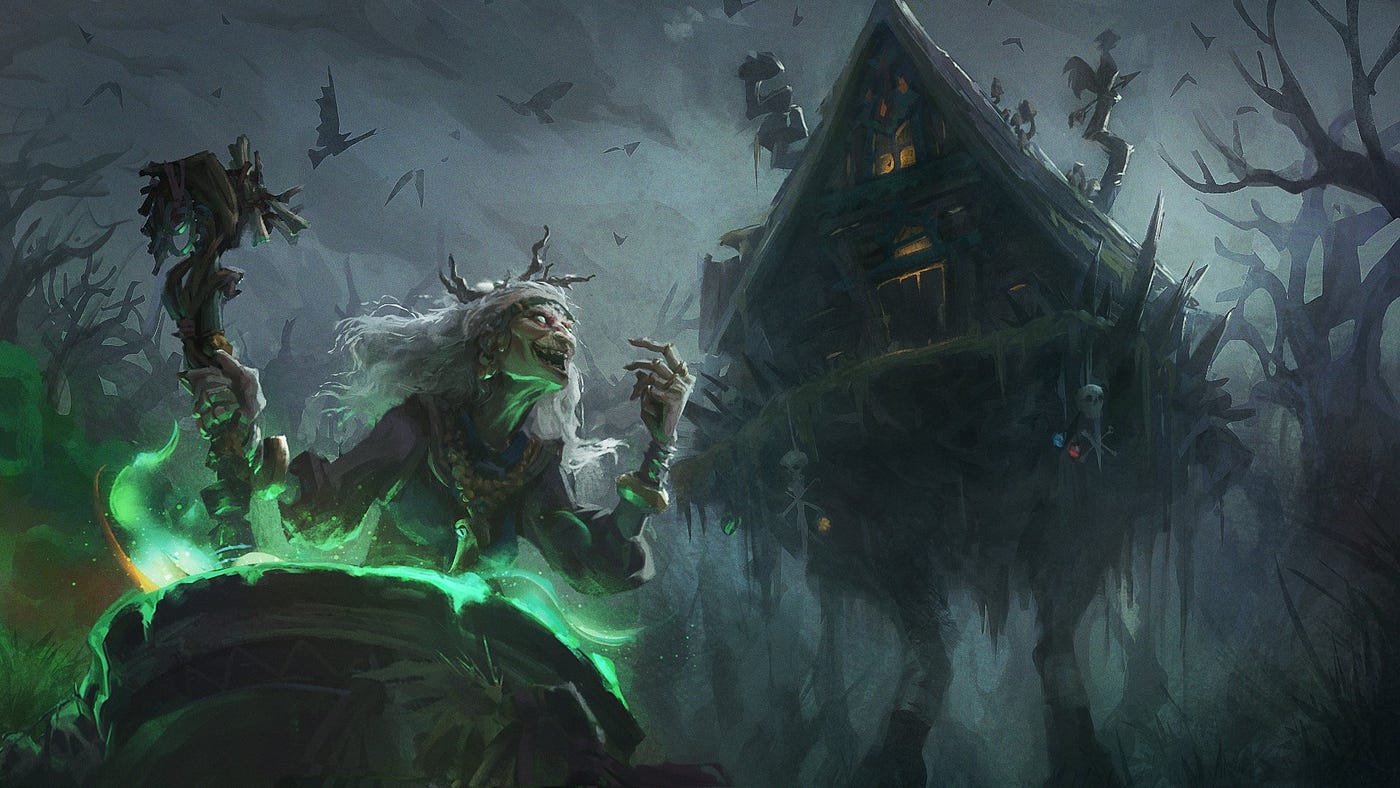
when Horror Yearbook – Baba Yaga stands as one of the most haunting and complex figures in Slavic folklore. Known as a wild, bone-chilling witch who lives in a house that walks on chicken legs, she inspires both fear and fascination. Legends across Eastern Europe describe her as a powerful old woman with the ability to fly through the air in a mortar, wielding a pestle as her weapon and a broom to sweep away her tracks. But Baba Yaga is more than just a villain in fairy tales—she’s a mysterious force representing nature, transformation, and even wisdom in disguise.
Unlike the traditional image of a witch who simply curses or terrorizes villages, Baba Yaga defies simple categorization. In some stories, she appears as a fearsome cannibal who devours those who stumble upon her forest hut. In others, she offers guidance to lost travelers, grants magical items, or tests heroes on their quests.
Her ambiguity is intentional. Slavic mythology often blends good and evil into a single force, and Baba Yaga embodies that balance. She doesn’t act out of malice alone; rather, she tests people’s intentions, courage, and cleverness. Heroes must use their wit and humility to survive their encounters with her.
“Read about: The Rake: The Creepy Creature You Should Never Meet in the Dark”
Perhaps the most iconic part of the Baba Yaga legend is her strange and eerie house. Unlike typical homes, this hut stands on massive chicken legs, allowing it to move and rotate in the forest. The door only opens when commanded with a specific chant: “Turn your back to the forest, your front to me.”
The house symbolizes more than just magic—it represents a boundary between the known and the unknown, the safe world of home and the dangerous realm of the forest. Entering Baba Yaga’s home often marks a rite of passage, especially in tales where a child leaves comfort behind and faces trials that lead to growth or transformation.
Baba Yaga frequently appears in Russian and other Slavic fairy tales, especially those involving young protagonists. One famous tale involves Vasilisa the Beautiful, a young girl sent by her jealous stepmother to fetch fire from Baba Yaga. Instead of perishing, Vasilisa impresses the witch with her obedience, cleverness, and kindness—qualities that allow her to leave unharmed and even blessed.
These stories don’t just serve to scare children. They pass on cultural lessons: the importance of respect, cleverness, and bravery in the face of overwhelming challenges.
“Read more: Strange Noises, Licked Hand: The Shocking Twist You Didn’t See Coming”
Baba Yaga connects deeply with nature. Living in the forest, surrounded by skulls and bones, she acts as a guardian of wild places. Her presence reminds people of nature’s duality—its ability to nourish or destroy.
In some interpretations, Baba Yaga also represents feminine power in its rawest form. She is independent, lives alone, and doesn’t conform to societal expectations. Some folklorists view her as a symbol of the ancient mother goddess—powerful, wise, and untamable.
In recent years, Baba Yaga has experienced a revival in literature, film, and games. Writers explore her as a feminist icon, a horror figure, or a magical mentor. You’ll find her in Neil Gaiman’s stories, Hellboy comics, the Witcher game series, and even references in John Wick—though stylized differently.
Artists and storytellers love Baba Yaga because she’s flexible. Whether terrifying or oddly nurturing, she challenges clear-cut definitions of good and evil.
Those curious enough can visit museums, festivals, or art exhibits in Eastern Europe dedicated to Slavic mythology. Some Russian and Ukrainian folktales still circulate in oral form, passed from grandparents to grandchildren. Others appear in modern books and animated films, ensuring Baba Yaga continues to haunt imaginations across generations.
If you ever walk through a dark forest and see a house spinning on chicken legs, remember—only those who approach with humility and courage have a chance to leave with their lives, or perhaps even a magical gift.